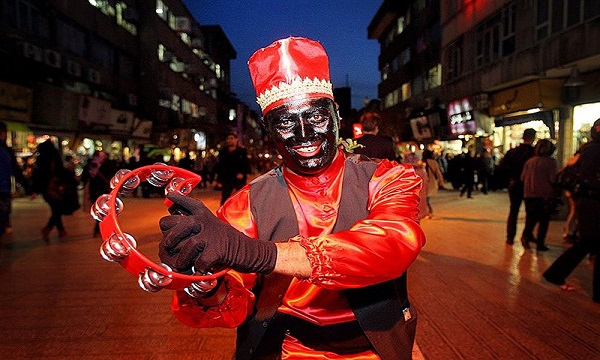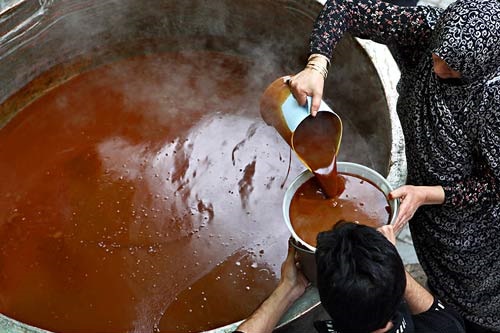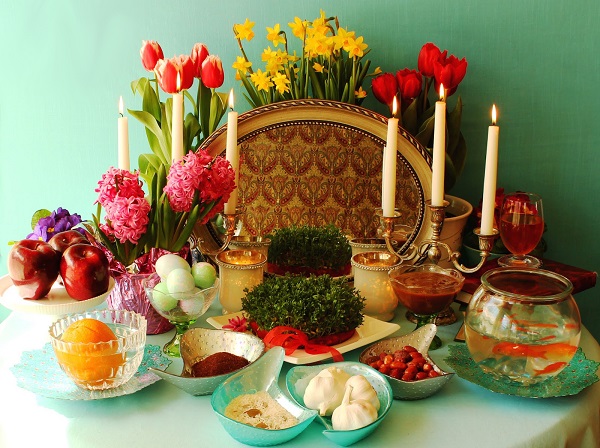Nowruz is a turning point in every year of our lives as Iranians. Full of good memories and days that start with freshness and freshness. One of the features of Nowruz is the performance of special customs in every region of Iran. From the past until now, Nowruz has special customs in each part of different cities of Iran. Some of them have become less and less and some of the Nowruz rituals are still performed in different cities of Iran. In this article, we will talk about Iranian traditions on Nowruz in some different cities of Iran.
Also, Iran travel agency, Iran Destination, will organize your trip to Iran. You can offer your tailor-made trip to Iran or visit our programs on the Iran tour page. You can contact to our Iranian travel agency, our agents are online to answer all your questions.
Iranian traditions on Nowruz
Iranian traditions on Nowruz; Why is it important for people to perform this ritual?
Nowruz is the most important and largest Iranian holiday that is celebrated every year with the beginning of spring and from the first day of Farvardin (21th of March). Some countries on the Iranian plateau also celebrate this holiday. In some countries, such as Iran and Afghanistan, where the solar calendar is used, Nowruz is the beginning of the new year, but in the countries of Central Asia and the Caucasus, the Gregorian calendar is common. So, Nowruz is celebrated as the beginning of spring. From the distant past, all the Iranian traditions on Nowruz have been performed in different cities to improve life, improve family income, open the fortunes of the youth, get rid of evils and bring goodness and blessings to life. Most of these customs and celebrations started in March to celebrate Nowruz and even continued until the end of April.
Iranian traditions on Nowruz in Tehran
Haji Firooz is known by most people for his black face and bell-shaped clothes. Haji Firooz is one of the symbols of Nowruz. From the last days of March, he announces the coming of spring by reciting poetry and holding a circle of bells and whistles in his hand. Today, this ceremony is held in most cities of Iran.
People of Tehran the night before New Year; They will cook Sabzi Polo Mahi (Vegetables pilaf and fish) because they believe that vegetables revive the heart.
Another custom of Nowruz in Tehran is to cook pilaf with noodles and also, with dates and fried raisins on the first day of new year. The pilaf is first stretched for the head of the family to be in charge until the end of the year.
Baking Kuku Sabzi (vegetable with egg) and Ash Reshte on the 13th day of the Nowruz holiday (Sizdah Bedar) is one of the other customs of Nowruz that the people of Tehran perform.

Haji Firooz
Iranian traditions on Nowruz in Kerman
The people of Kerman prepare sweets such as Kamach, Kolompe, Qutab, etc. for Nowruz. Also, they cook Ash Reshte (noodles soup) for the first day of the year. So that, at the time of the delivery of the year, they throw the noodles in the soup so that things will be done well for them until the end of the year.
One of the customs of the people of Kerman, the people believe that on the Sizdah Bedar, leaving the green of Eid in running water will eliminate the calamity. Today, this tradition can be seen in other cities as well.
In some areas of Kerman province, New Year prayers are written with saffron and rose water on the body of a container. Then, they make a syrup that all members of the family should eat to stay healthy all year round.
Iranian traditions on Nowruz in Fars province
One of the interesting customs in Fars province is getting marriage ceremony for an orange tree. They hold a net on the tree by holding an interesting ceremony. Then, they quote it and recite special poems so that the next year the tree will bear more fruit.
One of the customs of welcoming spring in Fars province, like most other cities, is cooking Samanoo with family members. Samanoo is a symbol of power and a symbol of goodness and blessing.

Samanoo Pazoon
Iranian traditions on Nowruz in Gilan
One of the customs of Nowruz, which is common in some parts of Gilan, is to Khosh Ghadam. Khosh Ghadam will be the first person that come to the host house on the morning of Nowruz and after the delivery of the year with the Quran, mirrors, water. Also, with branches of flowers and blossoms and boxwood. He hangs boxwood flowers in the house, puts flowers and blossoms in the shelf. Then, he pours some water on the heel. After that, the he puts Quran, water and a mirror on the Haft-Sin table. Then, he says congratulations. Then, he gives a coin to the host and gets Eidie and sweets from him.
Nowruz Khani is one of the customs of Nowruz in Gilan. In it, good-sounding people and artists go from neighborhood to neighborhood and from house to house, reciting special poems in Gilaki to welcome spring and announce the imminence of Eid.
Costums on Nowruz in Yazd
One of the customs in the city of Yazd in picking Haft-Sin is to place a container of wheat or flour on the Haft-Sin table. This tradition is to increase the blessings and sustenance.
Lighting a fire on the roof of the house on the last night of the year is another thing that Yazidis do to welcome spring. This is a symbol of the winter cold.

Haft-Sin Nowruz
Nowruz customs in East Azerbaijan
One of the customs of the people of East Azerbaijan is Bayram Paei for young brides. In this way, on the night of Eid, food, gifts, fruits and sweets are sent to the young brides from their father’s house. Today, this custom has faded.
One of the things that the people of Azerbaijan do on Eid is Samanoo Pazoon. In this way, family members gather and cook Samanoo. This is also done in other cities and cultures.
Last words
Many Iranian Nowruz customs are changing or disappearing. It is good to have a study about the Nowruz customs of our neighborhood in every area where we live. Also, do them as much as possible so that this Iranian spiritual heritage will remain for years to come and for future generations.

















































































































































































































































































































































































